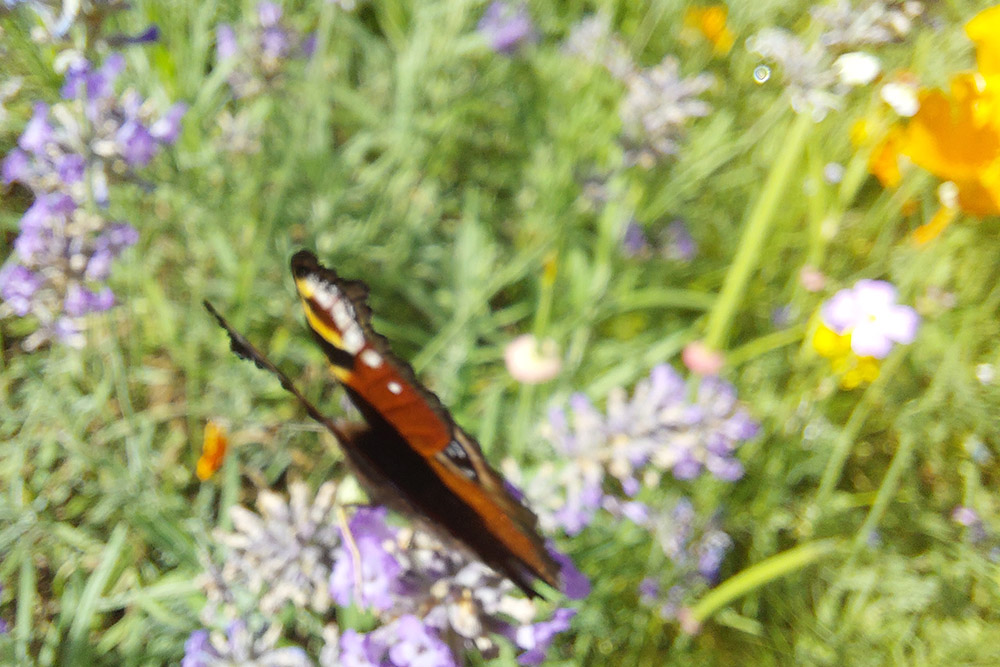20240728 Anglesey Abbey
by Andy Corrigan
Making new friends on a walk around Anglesey Abbey. Looking up, around and on. A visual essay walk.
I was inspired to undertake this walk after reading Rebecca Solnit’s chapter ‘Labyrinths and Cadillacs’ in her book ‘Wanderlust’:
“Many gardens were sculpture gardens, […] whole spaces that could be read, making the garden as much an intellectual space as the library.
[…] in the space and time of the walk and its encounter with the statuary, the story was in a sense retold just by being called to mind.”
(Solnit, 2022, p. 74-75)1
1)
Three summer flowers and a butterfly in the Winter Garden.
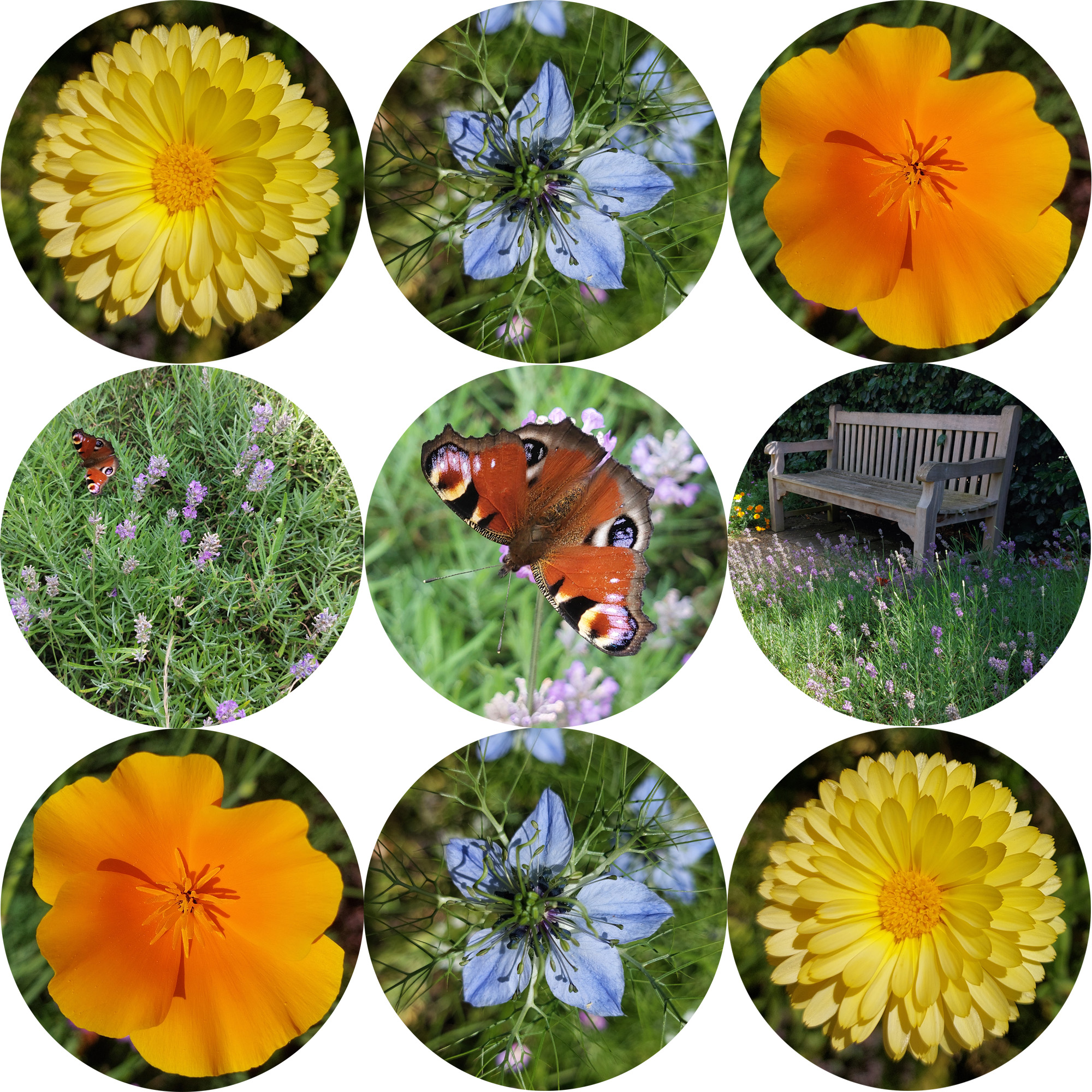
Calendula, Nigella (Love-in-a-Mist), California poppy, Peacock butterfly flittering around lavender. A place to sit. Summer in the Winter Garden.
2)
‘Painting’, a-muse on the Emperor’s Walk.
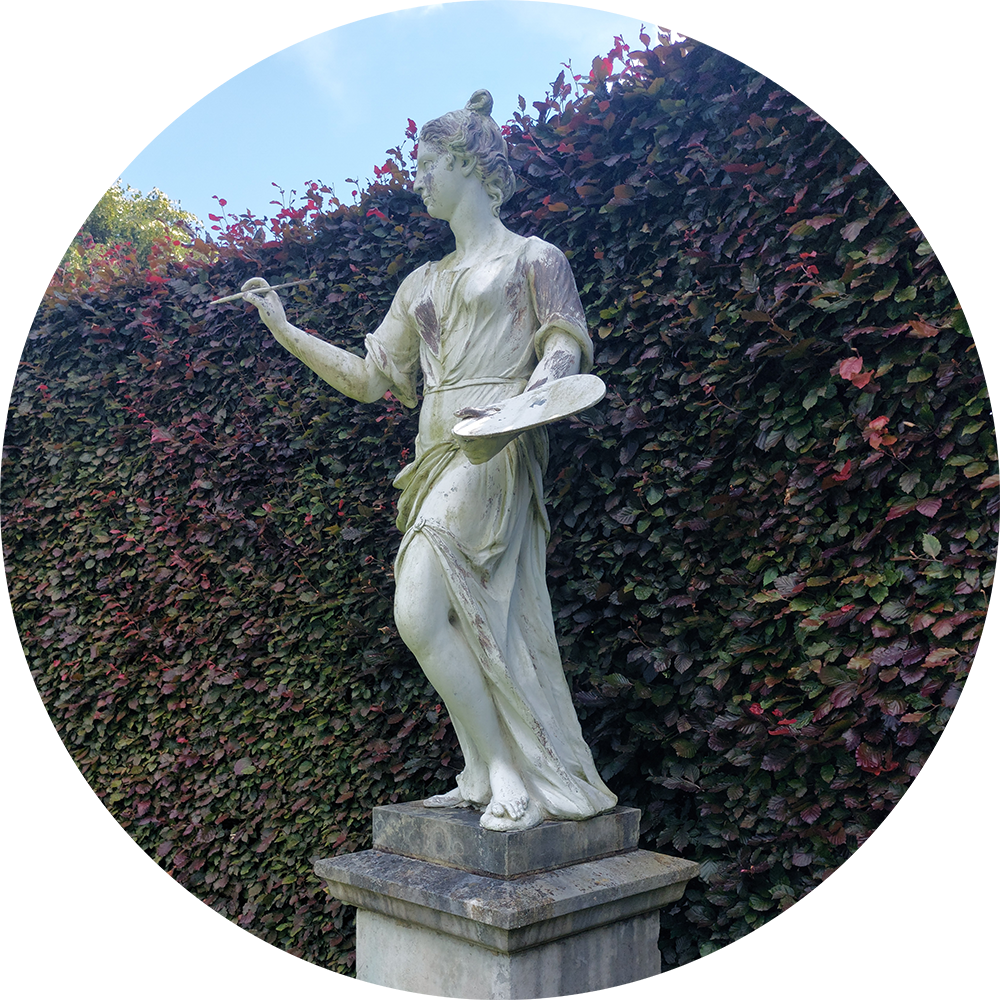
- ‘Four statues of female figures at Emperor’s Walk’ 1331437
- ‘Painting’ NT 515149
- ‘Stowe, the gardens of the Right Honourable Richard Lord Viscount Cobham. Address’d to Mr. Pope. To which is added, Taste. A poem. By Mr. Pope. (1732)’ Gilbert West’s topographical poem ‘Stowe’
- Copper beech Fagus sylvatica f. purpurea
3)
A stumpy tree standing out in an avenue of more statuesque trees.

Pl@ntNet App, a citizen science project, identifies the tree as Catalpa bignonioides.
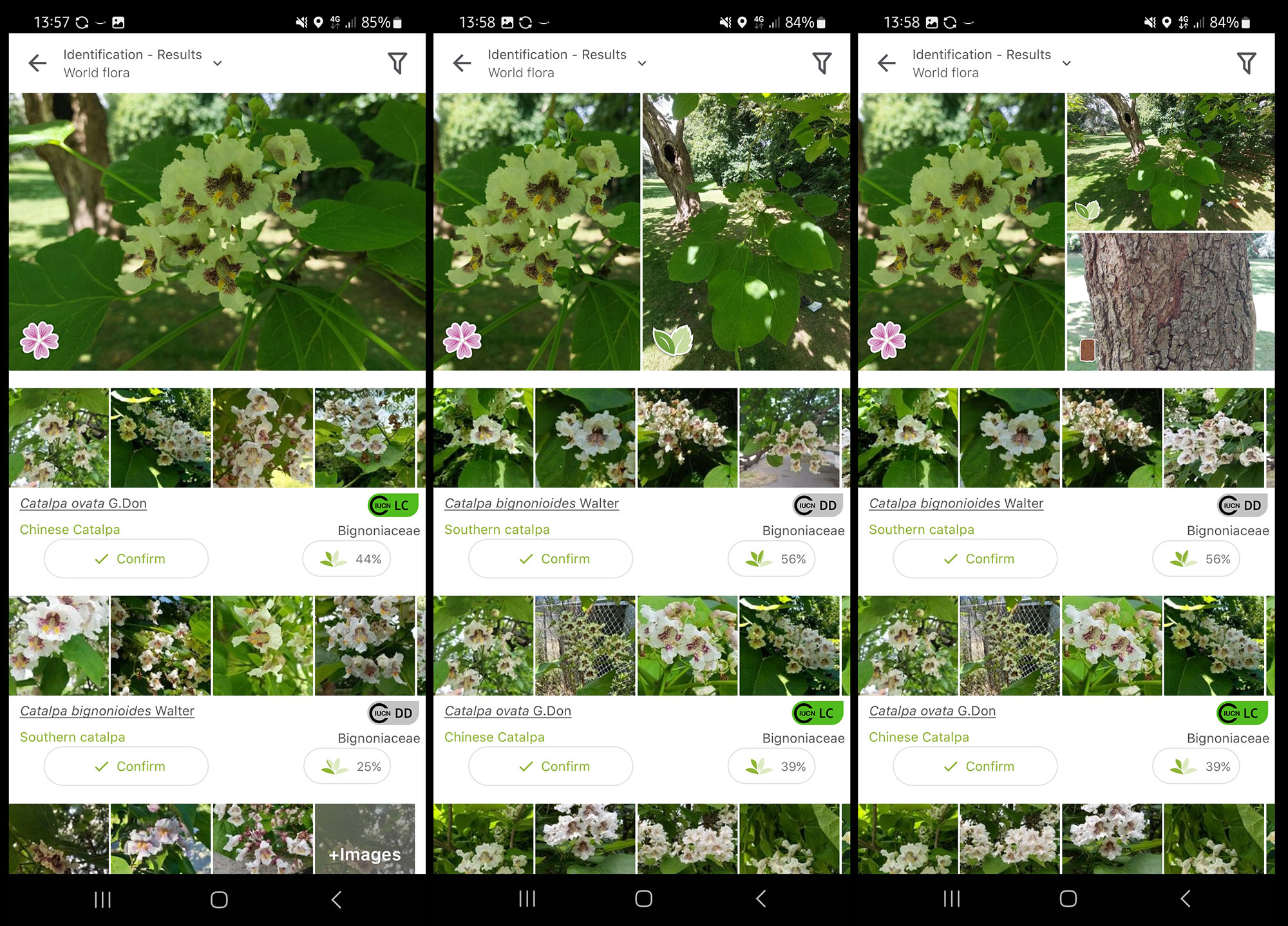
Catalpa bignonioides - a gnarly portrait.
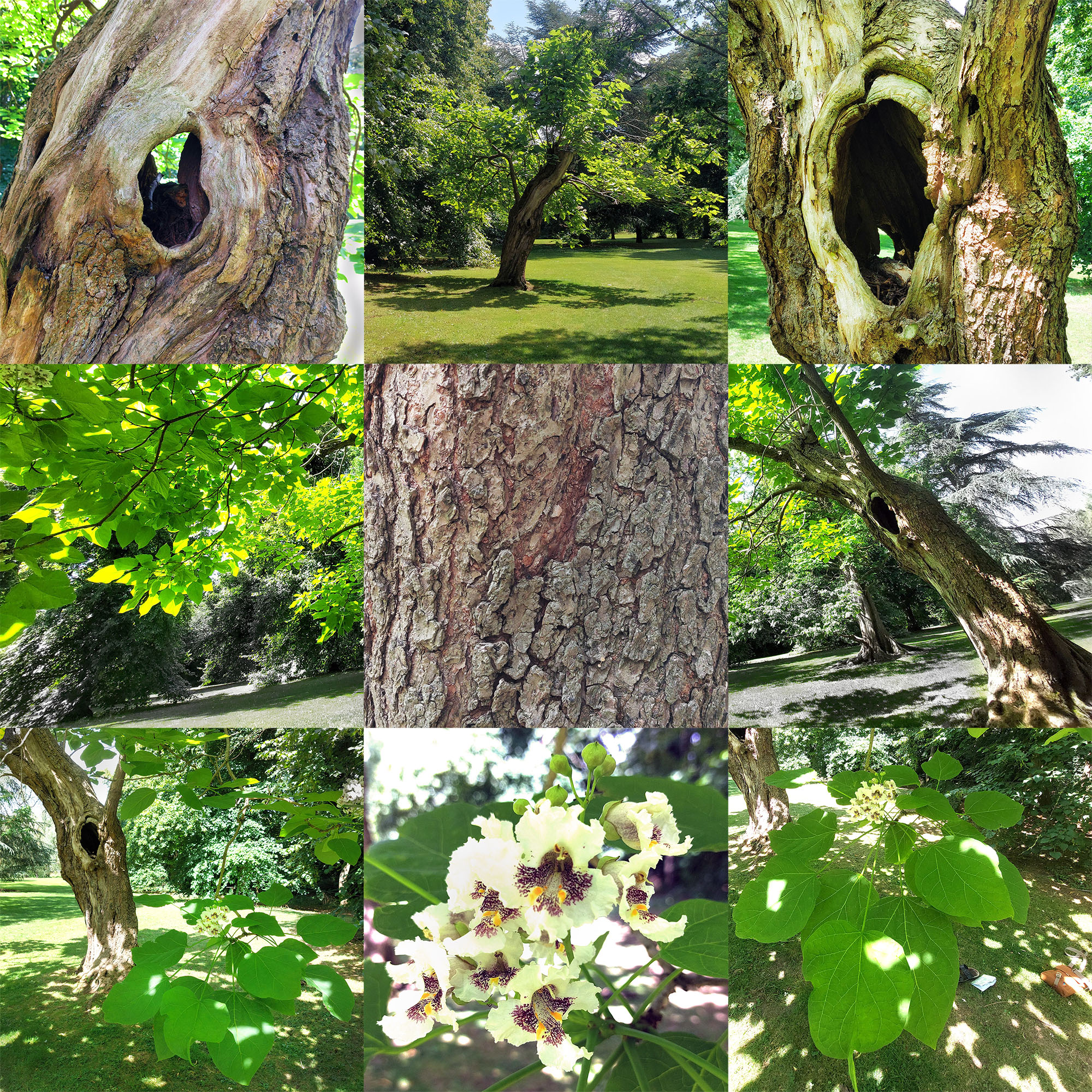
On 31 May 1874, William Thiselton-Dyer wrote to Charles Darwin to share some observations of the movement of plants. Fellow botanist Thomas Meehan had recently observed movement of the stigma lobes in Catalpa flowers manually stimulated by a syringing technique.
- ‘Catalpa bignonioides’
- ‘Letter no. 9478’, Darwin Correspondence Project
- Thomas Meehan’s observations of Bignoniaceae published in ‘Proceedings of the Academy of Natural Sciences of Philadelphia 25’ (1873): 277
4)
A struggling sycamore(?) tree.
Perhaps a victim of recent climate variations - a long dry summer and a long wet spring?
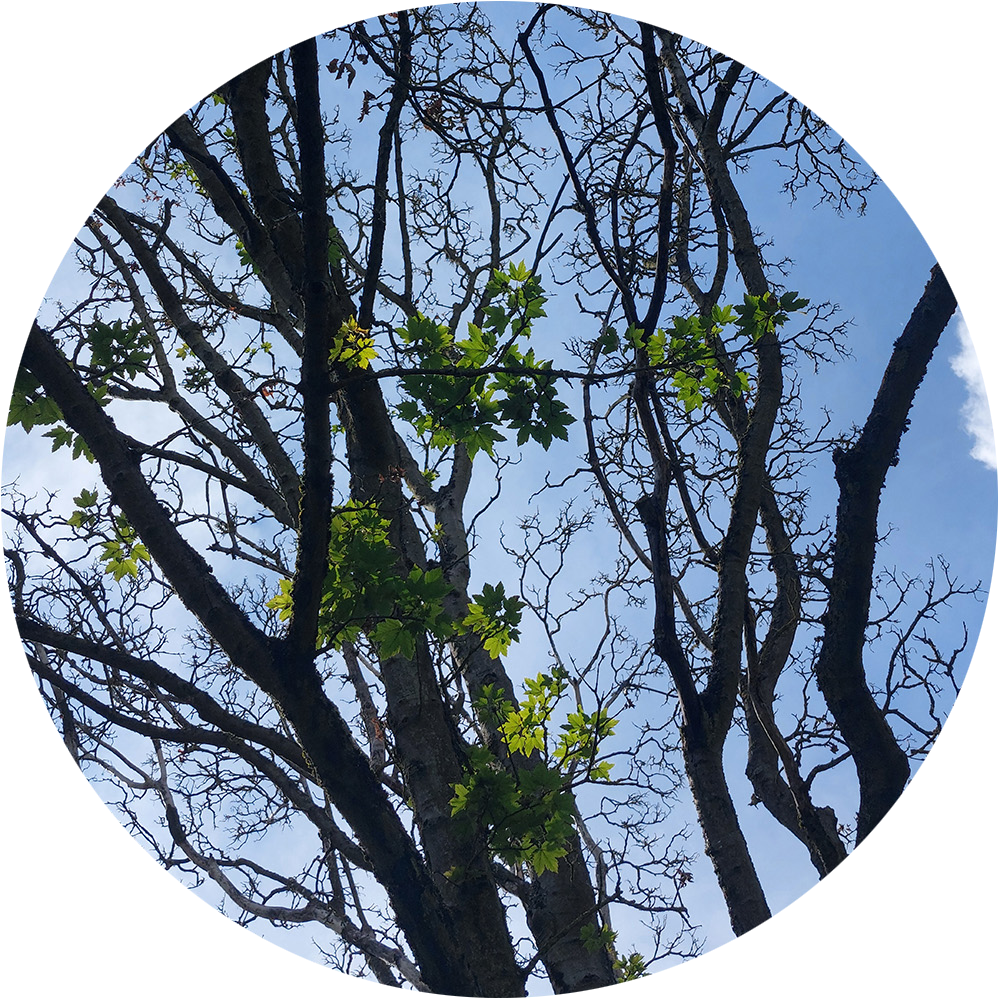
- Not unique: Sooty Bark Disease affecting sycamore trees at Creswell Crags.
- ‘Climate change and tree diseases’, Carolyn Riddell, Forest Research by Forestry Commission.
5)
Skylight Garden
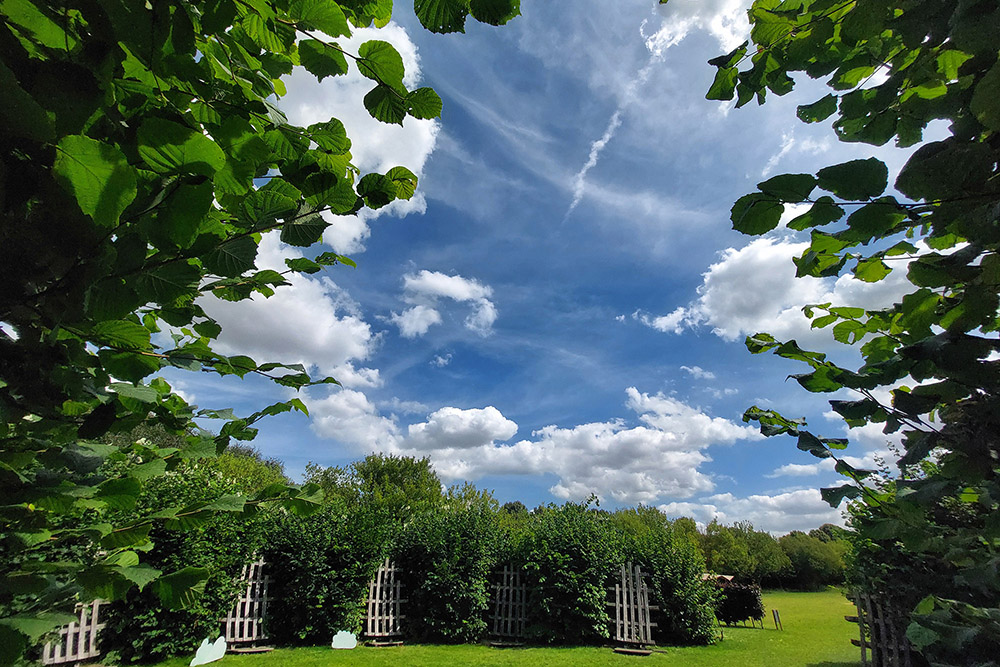
The twelve supports of the Skylight Garden.
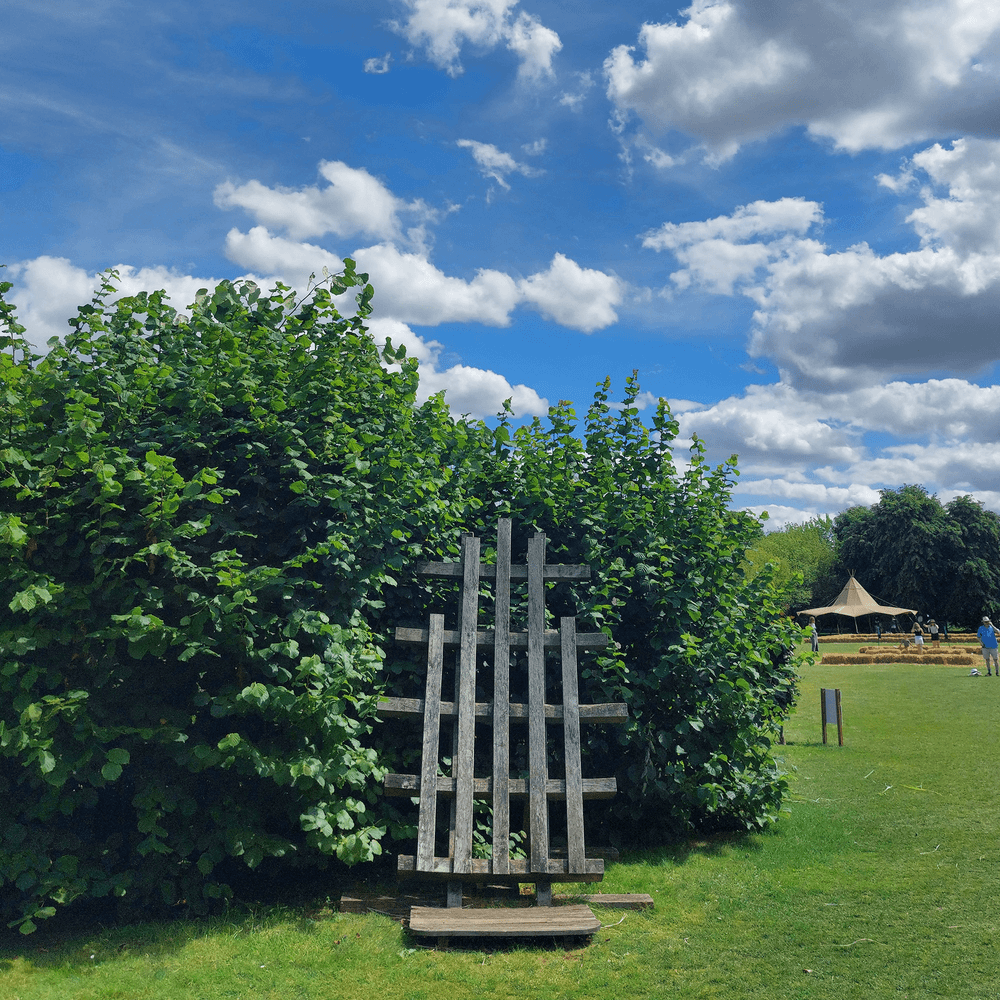
Looking up, looking around and looking in.
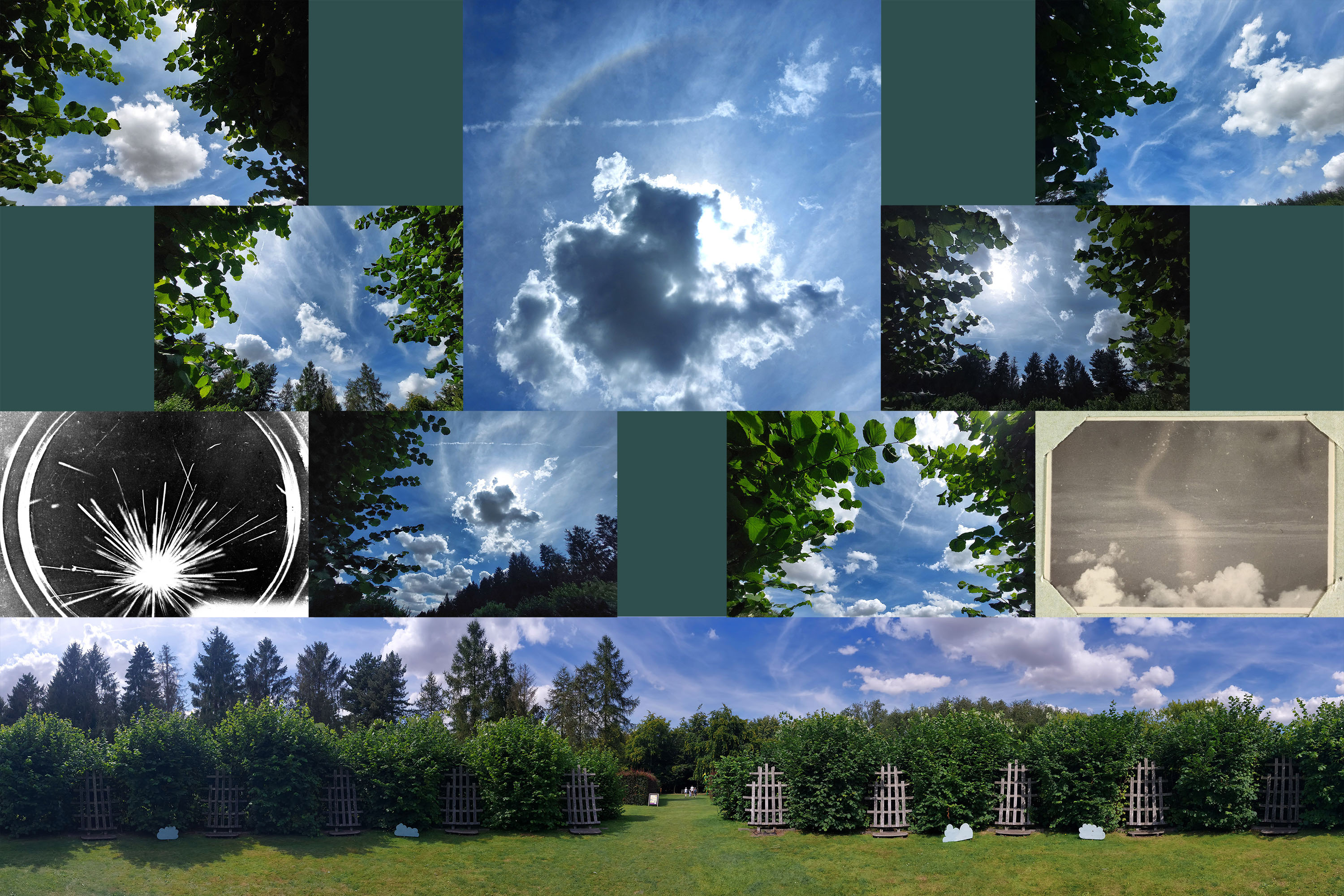
One of the first cloud chamber photographs recorded by Charles Wilson in 1912.
Scroll to image 8 in the sequence of nine. A view from above the clouds at the summit of Mount Emei, Sichuan, on 19 Jan. 1945. A gift to from Tang Yao, Director of the National Forest Products Research Station.
6)
Richard Relhan, a Cambridge apothecary, spent much of his spare time creating topographical artworks of local scenes, including Anglesey Abbey, between 1797-1838.
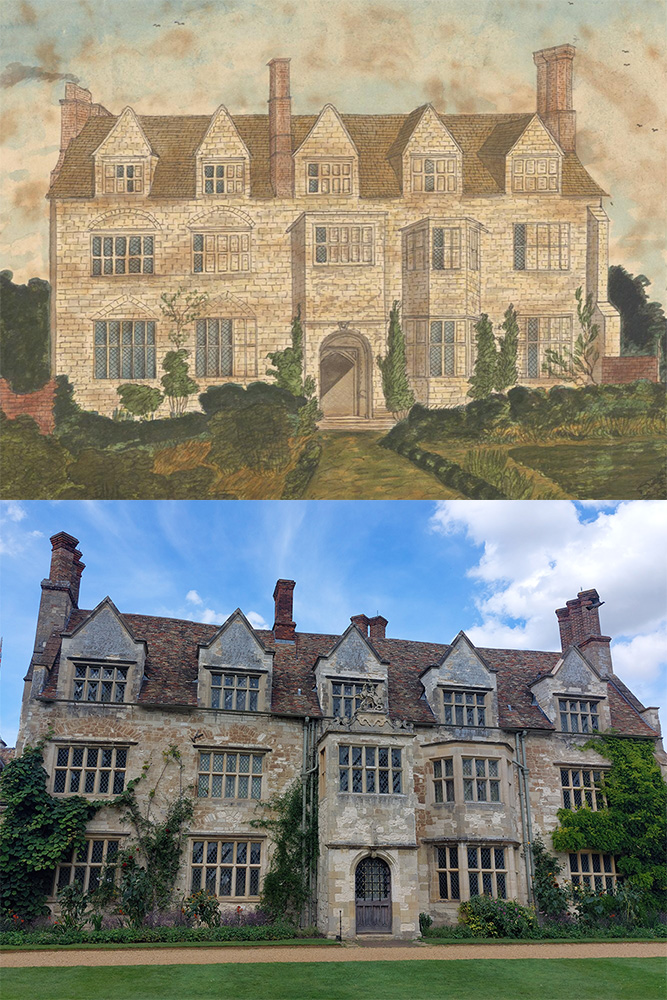
Even the plants growing up the wall look similar ~200 years later:
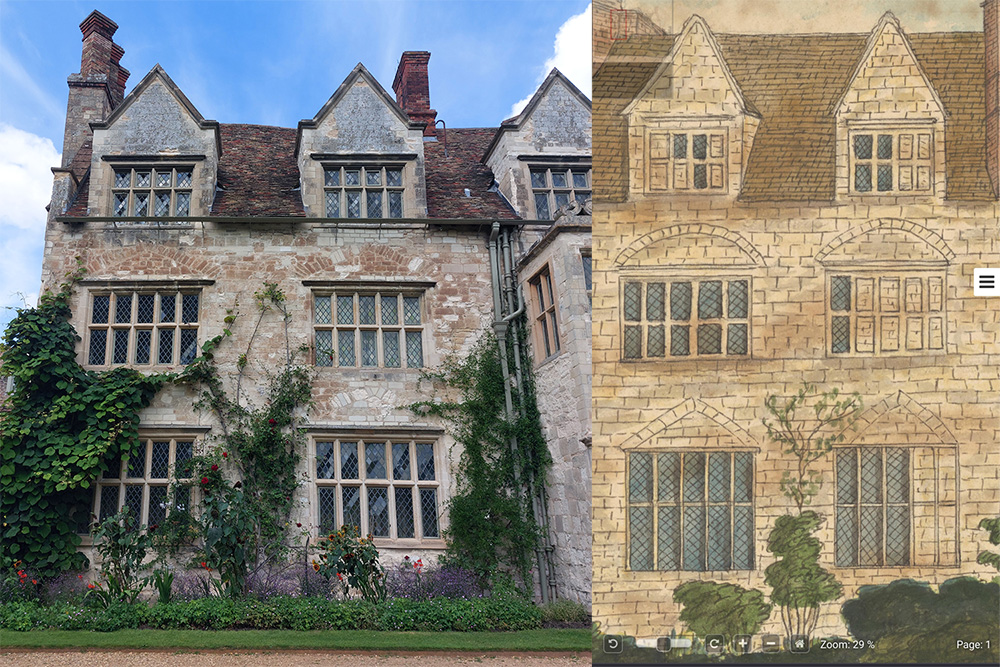
- Anglesey Abbey: 1000611 was also owned by Thomas Hobson, and George Jenyns, father of naturalist Leonard, who was a correspondent with Charles Darwin and brother-in-law to John Stevens Henslow. So there are several relevant nodes of connection.
7)
New roses and old marble in the Rose Garden.
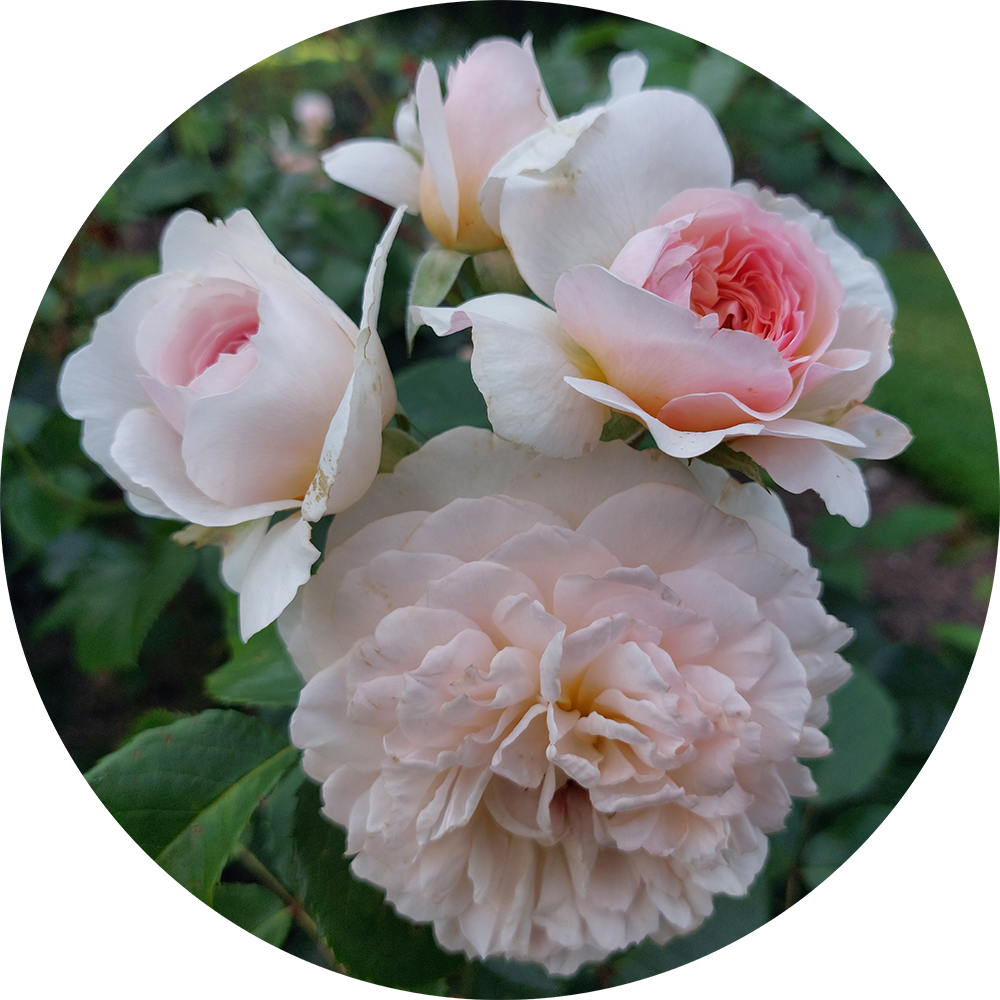
A herm, visually quite similar to the head of roses(?!), the curls of hair and petals - a perfectly sized snail nestles in a nook, pretending to be an earring or a curl of hair.
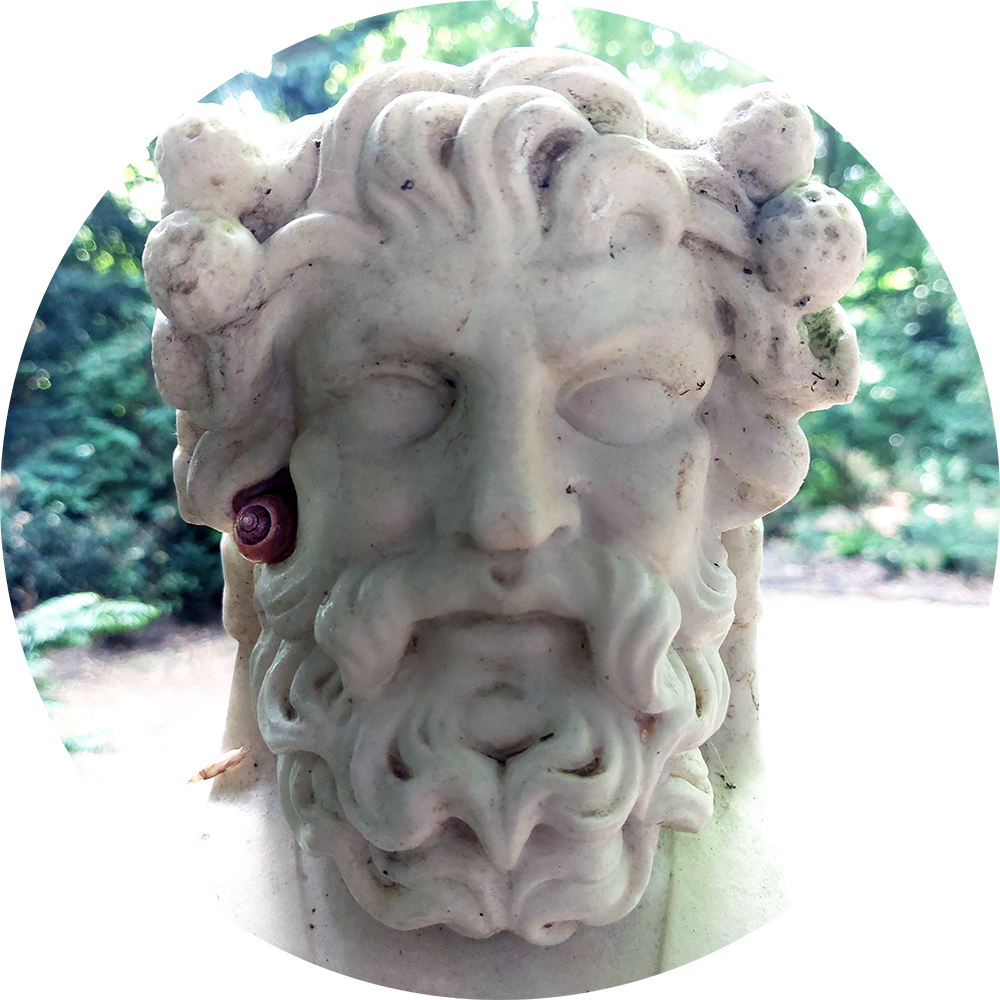
A 3D model of Hermes, in old age and as a youth, looking forward and back in time. Borders, roads, travellers, transitions and journeys. Gates, doorways and passages, beginnings and endings, duality.
- The Rose Garden has recently been extended bringing the number of Rose varieties to 60.
- Herm
- ‘Four term busts, at rose garden’ 1127063 - I wonder if “Term” is a spelling mistake for “Herm”?!
- ‘Hermes Propylaios as a youth and adult’ NT 516671
8)
Leaves and seeds, from a Norway Maple(?), taking a rest in the shade.
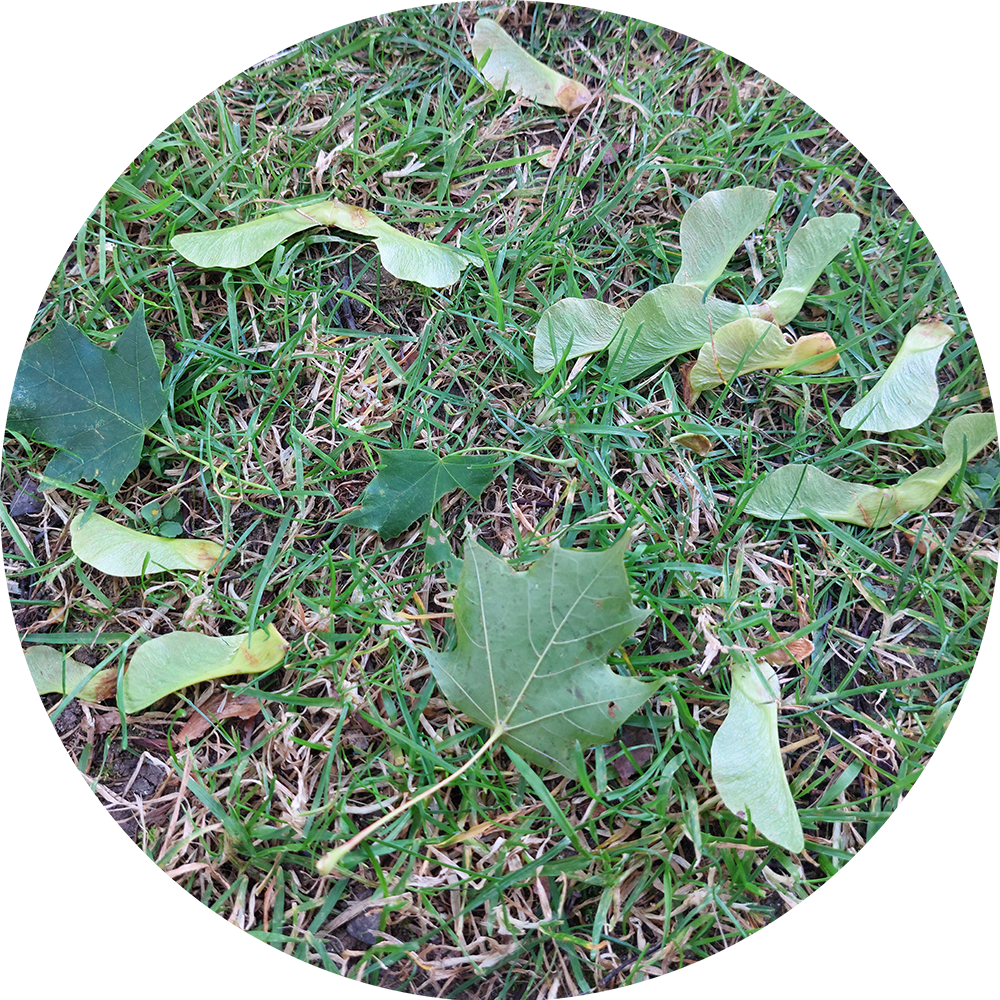
9)
A picture frame, framing a scene.
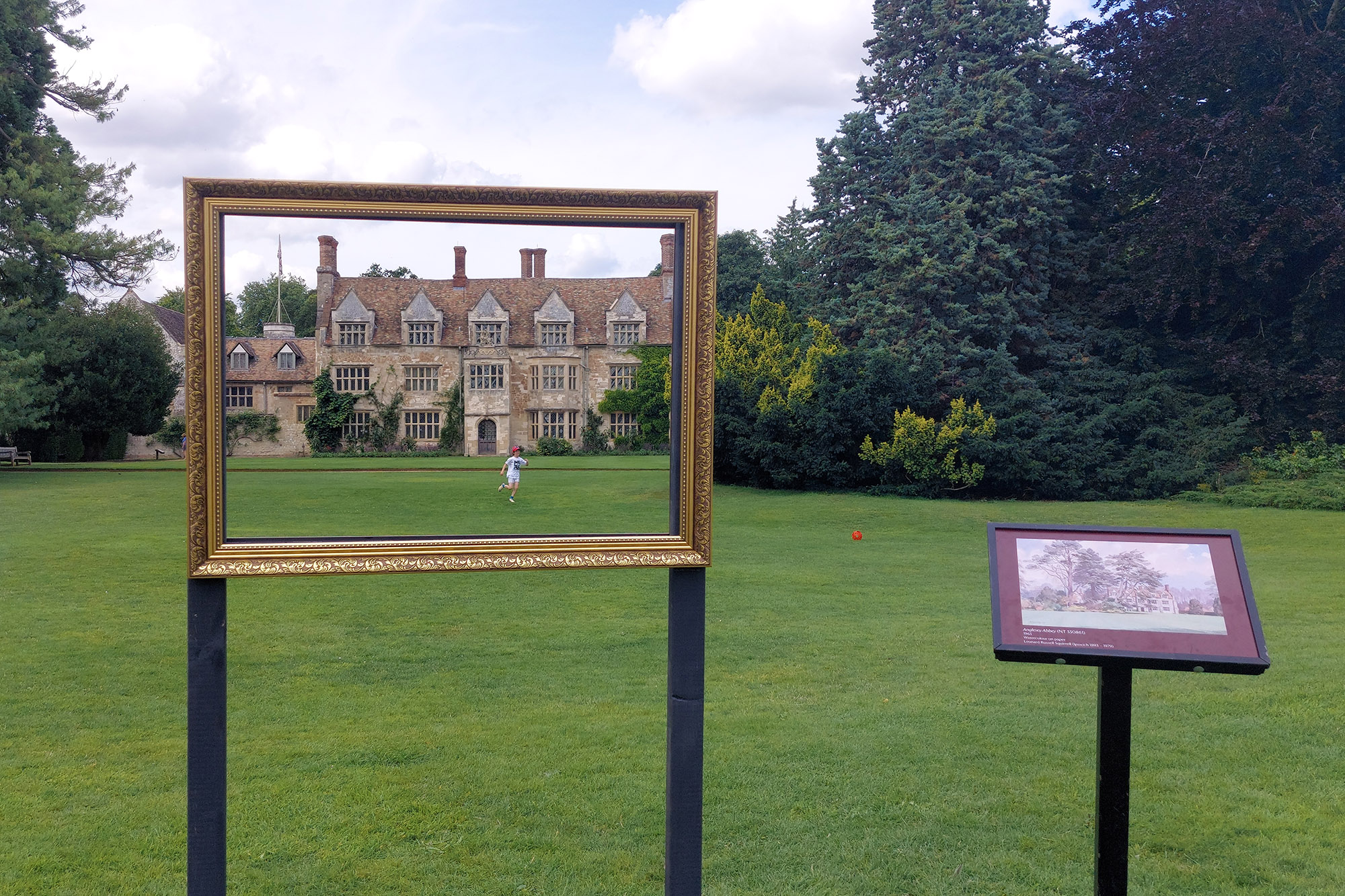
- ‘Anglesey Abbey’, by Leonard Russell Squirrell, 1965, NT 513875.
10)
Another struggling tree, a small oak.
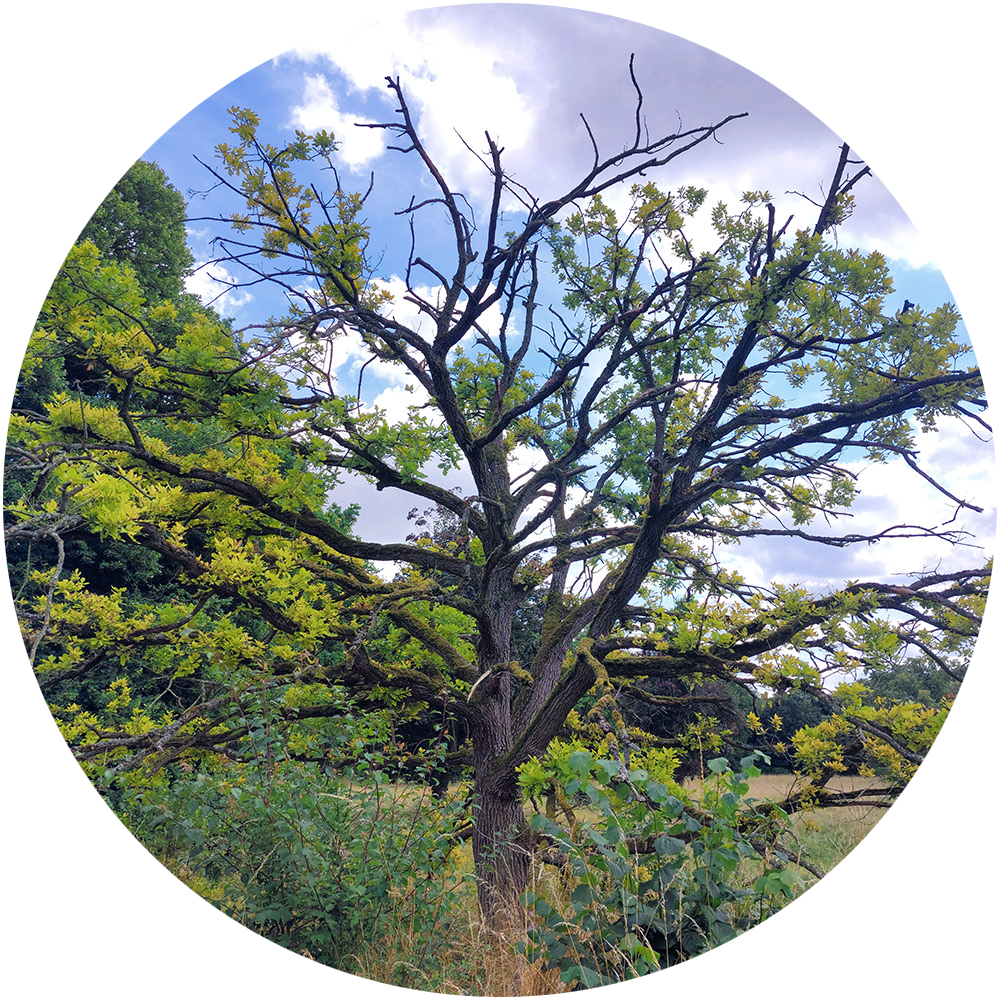
11)
A bloom in the wild … [flower bed].
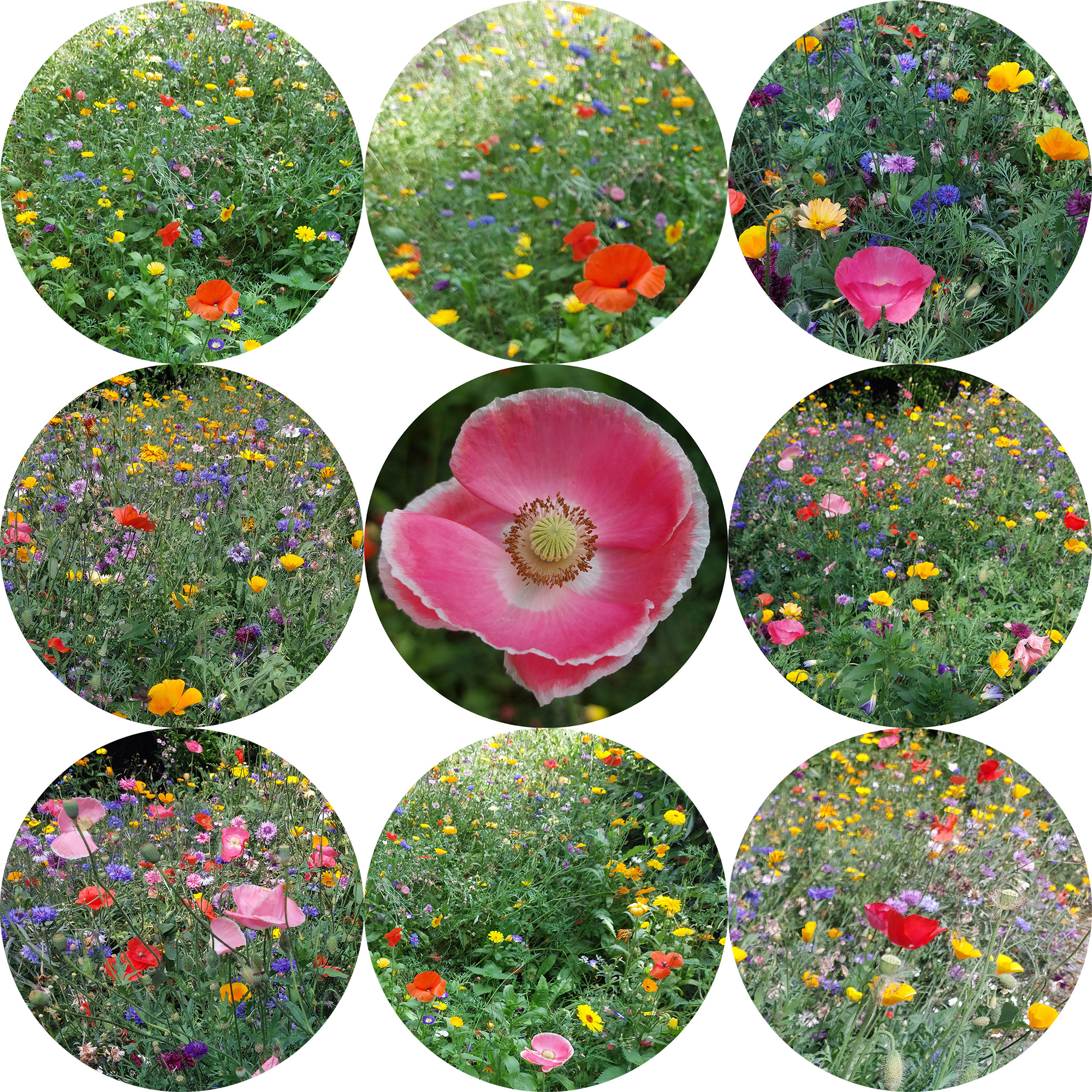
The writing of this post has been funded by the AHRC-RLUK Professional Practice Fellowship Scheme for research and academic libraries.
-
Solnit, R. (2022), Wanderlust. London: Granta Books. ↩
